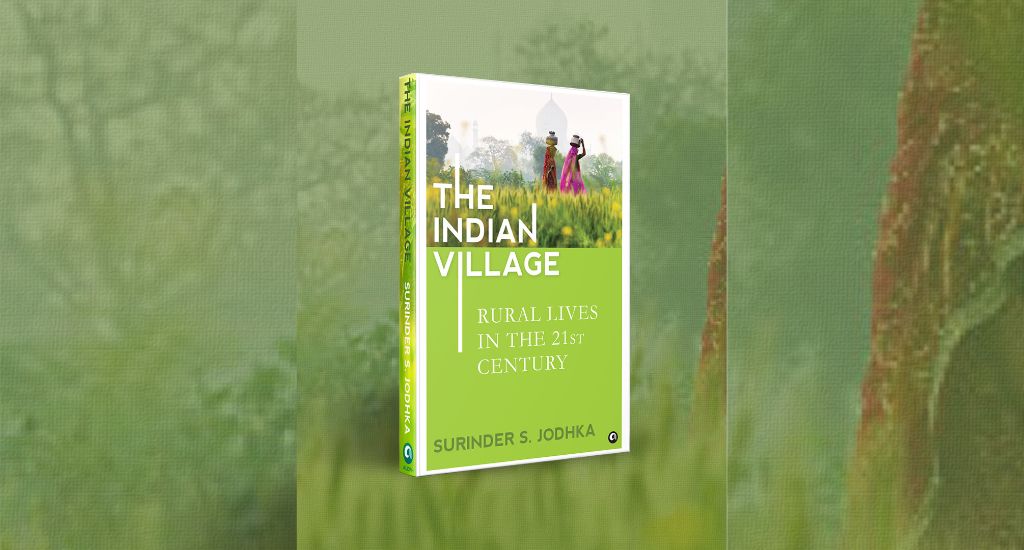
Book Review: The Indian Village by Surinder S. Jodhka
Published by Aleph Book Company, the book chronicles socioeconomic changes in Indian villages through interesting anecdotes.

Published by Aleph Book Company, the book chronicles socioeconomic changes in Indian villages through interesting anecdotes.
Electricity and access to running water facilities, road connectivity, health centres, livelihood opportunities, women’s empowerment, minimum support prices for agricultural produce, schools, and colleges, as well as sanitation facilities – there is a multitude of issues that surface at the mere mention of rural India.
These challenges are what Surendra S. Jodhka illuminates in his latest book, The Indian Village: Rural Lives in the 21st Century (Aleph Book Company, priced at Rs 799/-). Supported by meticulous research in social sciences and ethnographic studies, this book serves as a valuable and up-to-date reference for those seeking to understand the state of India’s villages in the present day.
So how are things faring in Indian villages? As children, many of us have travelled to our grandparents’ houses or farmlands in rural regions. And that serene image of village life stays on in our minds – of living close to nature, in an organic, simple manner, and witnessing first-hand a caste-based economic system where relations among various communities were generally amicable, despite existing separations.
It is this nostalgic image of an Indian village that serves as a starting point for Jodhka, a professor of sociology at Jawaharlal Nehru University, New Delhi, he embarks on his quest to gain a contemporary perspective on the villages of India in the present day.
“The idealised version of the village that many in the middle class continue to carry in their minds has very little to do with the realities of life on the ground,” he wrote in the book.
Through the pages, the author takes you on a roller coaster ride across various villages in India. The recent contributions of Indian and foreign sociologists, and social anthropologists, as well as Jodhka’s own fieldwork in Haryana’s villages, come together to offer a vivid portrayal of the evolving reality within contemporary Indian villages.
Also Read: Do “reel villages” in cinema show real rural India?
The pleasant surroundings and close-knit neighbourly bonds in villages that are often featured in popular movies have changed. Jodhka returns to his research village in Haryana after 28 years, and a response from a landless Dalit labourer there highlights the current atmosphere in a North Indian village.
“Chaudhary (landlord) is a thing of the past. No one cares for anyone simply because he thinks he is a Chaudhary. Chaudharies, if they are, they must be in the four walls of their homes. We do not care,” the labourer said.
It’s through anecdotes like this that Jodhka chronicles the socioeconomic changes that have happened in Indian villages. The upheavals caused by the social and caste hierarchical orders due to the Green Revolution in the late sixties are among the most exciting themes in the work. The current statuses of some strong rural arrangements like the jajmani system and varna-based occupational segregation are well reported, with an interesting presentation of their origins and how they have changed to the present day.
Another well-analysed scenario is the status of the Dalits in the rural-urban continuum, and how the developmental and land reform-based intervention by the government played a role in the political rise of the community. Jodhka also takes a critical view of the positives and negatives of rural development initiatives introduced by the government, like the Panchayati Raj System and MGNREGA. He talks about how the benefits of such state schemes have been politically manoeuvred to their own advantage by the dominant castes, and the upgrades required in monitoring and tweaking the schemes for better results in raising the income of the poor.
Also Read: MGNREGA: Armed with app, Odisha women show the way
The effects of the three towering political figures in Indian politics – Mahatma Gandhi, Jawaharlal Nehru and Bhimrao Ambedkar – is another exciting chapter in the book. Jodhka probes how Gandhi’s idea of a village republic clashed with Ambedkar’s, due to the caste disparities plaguing the social setup, coupled with the ‘non-progressive’ mindset of many communities. Amid their differences, Nehru tried to strike a balance while trying to find ways of bringing his Russia-influenced dreams of industrialisation to the rural expanses of India.
Jodhka strongly recommends a significant overhaul in how we perceive rural dynamics in the country today. The widespread availability of smartphones and high-speed internet connectivity holds enormous potential for offering remote education and skill-based training.
The author also observes that the expanse of rural India has not contracted despite the spread of ‘modernised’ cities. Though many regions still need urgent interventions in health and education, there are villages where rich farmers have invested in the education of their children and who are creating a new wave of ‘richer’ outmigration that’s different from the earlier phase of the movement for labour.
Also, the demographic enormity of rural India is now aggressively getting integrated with the urban dynamics. Though the quality of education in rural areas is still quite low, it has reached a level where it can be moulded to impart skills needed for livelihood. Technology needs to be used to create a skill-based population that can work in the fields of agriculture, data logging, online marketing, nursing and many other service-based industries where the educated youth can earn without the necessity of migration.
Also Read: Many Corners of Village Square – Stories and Insights from Rural India
The author’s passion for digging deep into life in an Indian village presents many answers needed for creating more effective corrections required for the proper targeting of development schemes. The book is a must-read for agencies focusing on raising the living standards of the underprivileged population in rural India.
Anurag Tomar is a former journalist who now lives in a village in the Uttarakhand hills.